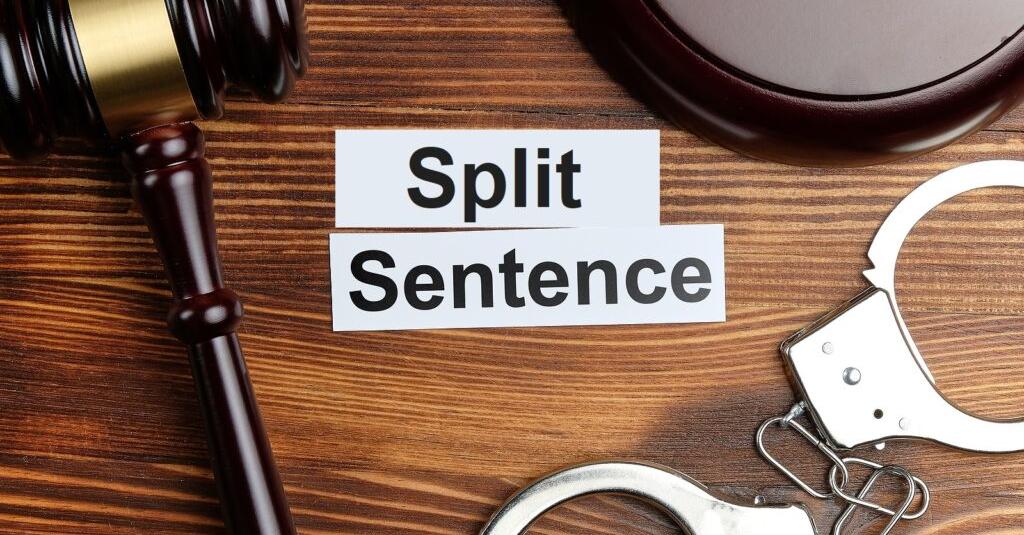Are you curious to know what is a split sentence? You have come to the right place as I am going to tell you everything about a split sentence in a very simple explanation. Without further discussion let’s begin to know what is a split sentence?
In the realm of criminal justice, various sentencing options are employed to address offenses while considering factors such as rehabilitation, public safety, and proportionality. One such sentencing option is a split sentence, which may be unfamiliar to many. If you’re curious about what a split sentence entails and its significance within the legal system, this blog post will shed light on the concept. We will delve into the definition of a split sentence, its purpose, and the potential implications for individuals convicted of a crime.
What Is A Split Sentence?
A split sentence, also known as a partially suspended sentence, refers to a type of sentencing structure where a convicted individual is sentenced to a combination of incarceration and supervised probation or parole. Rather than serving their entire sentence behind bars, a portion of the sentence is suspended, allowing the individual to serve the remaining time under community supervision.
Components Of A Split Sentence
A split sentence typically consists of two main components:
- Incarceration: The convicted individual serves a portion of their sentence in jail or prison. The duration of this period can vary depending on the severity of the offense, statutory guidelines, and the discretion of the judge. The purpose of the incarceration component is to provide a punitive element while allowing individuals to experience the consequences of their actions.
- Supervised Release: Following the period of incarceration, the individual is released under supervised probation or parole. During this phase, they are subject to specific conditions and must comply with the requirements set by the court. This may include regular check-ins with a probation or parole officer, participation in rehabilitative programs, drug testing, community service, and adherence to curfews or other restrictions.
Purpose And Potential Implications
- Rehabilitation: One of the key purposes of a split sentence is to provide an opportunity for rehabilitation. By incorporating a period of community supervision, individuals are given the chance to reintegrate into society, access necessary support services, and address the underlying causes of their criminal behavior. This can include substance abuse treatment, counseling, vocational training, or educational programs.
- Deterrence: Split sentences can serve as a deterrent by imposing both a period of incarceration and the requirement to maintain good behavior during supervised release. The potential for returning to prison if the conditions of release are violated can act as a deterrent against further criminal activity.
- Community Safety: Split sentences aim to balance punishment and public safety. By allowing individuals to serve a portion of their sentence under community supervision, it provides an opportunity for them to be closely monitored, ensuring they do not pose an immediate threat to public safety while undergoing rehabilitation.
- Individualized Justice: Split sentences allow for individualized justice by considering the specific circumstances of each case. They provide judges with the flexibility to tailor the sentence based on the nature of the offense, the individual’s criminal history, and their potential for rehabilitation.
Conclusion
A split sentence is a sentencing structure that combines a period of incarceration with supervised probation or parole. It serves as a mechanism to balance punishment and rehabilitation while considering individual circumstances. By incorporating community supervision, split sentences aim to facilitate reintegration, encourage rehabilitation, and promote public safety. Understanding the concept of a split sentence provides valuable insight into the multifaceted nature of the criminal justice system and the range of options available for addressing criminal offenses.
You can collect more information about such topic on Howtat
FAQ
What Is An Example Of A Split Sentence?
Here is an example of how split sentencing works: let’s say you were sentenced to six years in prison. Under a split sentence, you will serve three of those years in county jail, then you will be able to serve the remaining three years of your sentence under probation.
What Is The Meaning Of Split Sentence?
Basically, this means that the judge imposes a specific prison sentence but suspends a part of it contingent on the defendant completing a similar term of probation. For example, a court might impose a true split sentence of 6 years with 4 of those years suspended.
What Is A Split Sentence In Federal Court?
Judges sometimes impose a split sentence, that is, a sentence that combines incarceration and home confinement. Zone C of the federal Sentencing Table allows a judge to impose a split sentence with guidelines ranges of 10–16 months or 12–18 months. The period of incarceration will likely be served in a federal prison.
How Does A Split Sentence Work In Alabama?
Under a split sentence, the judge imposes a limited amount of jail time followed by a period of probation. The jail time that is not served can be imposed, and the defendant made to serve the remainder of his sentence if they violate the conditions of their probation.
I Have Covered All The Following Queries And Topics In The Above Article
What Is The Dash Used To Split A Sentence
What Is A 3 Month Split Sentence
What Is A 15 Year Split Sentence
What Is A Split Sentence In Florida
What Is A Split Sentence Criminal Justice
What Is A Split Sentence In Arkansas
What Is A 20 Split 5 Sentence
What Does It Mean When A Sentence Is Split
Split Sentence Probation Definition
Split Sentence Criminal Justice
Shock Probation
What Is A Suspended Sentence
Split Sentence For Class 1
Split Sentencing Quizlet
Mixed Sentencing
What Is A Split Sentence
What is a split sentence?
